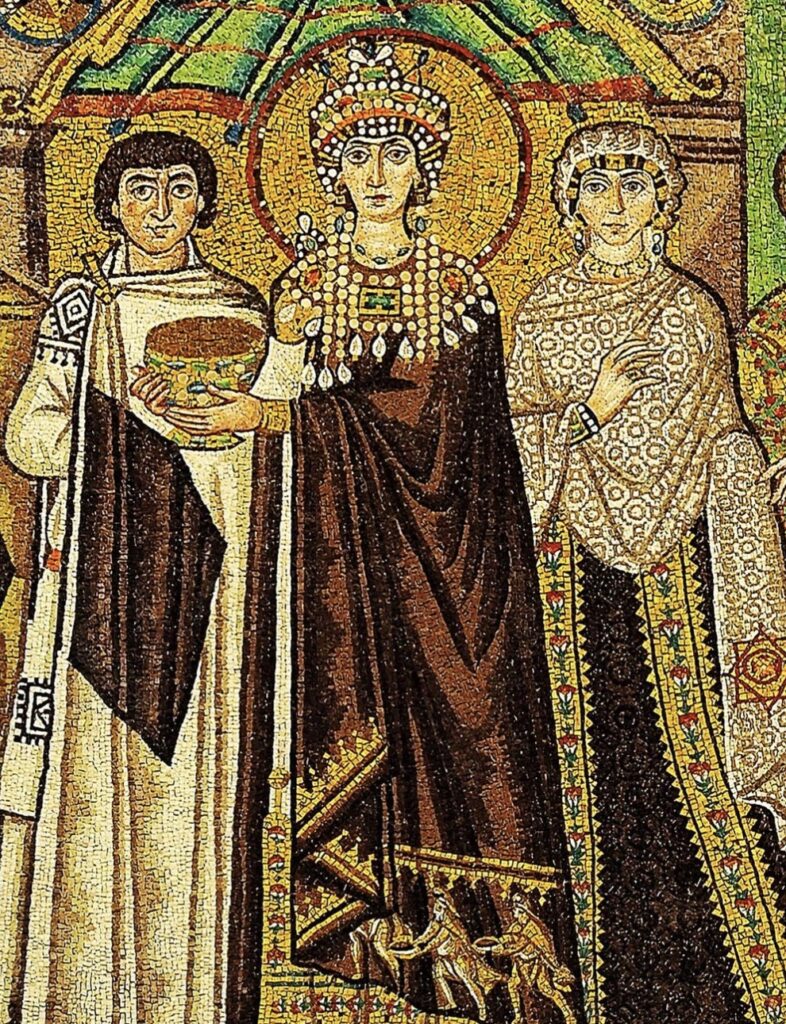Bedecked in pearls, jewels, gold and purple cloth, and with those remarkable eyes (beneath an imposing unibrow and above a decidedly humorless face), this is the empress Theodora: formidable and radiant at the church of San Vitale in Ravenna in the 6th century AD.
It’s a powerful depiction and a masterful mosaic. But it is the salacious (mostly slanderous) account by Procopius in his Anektoda that really captures the imagination. In his politically motivated takedown of the imperial couple, Procopius unleashed a bitchy diatribe and focused much of his ire on the empress.


He referred to Theodora as “the most depraved of courtesans” expounding upon her alleged early career as a circus performer and undiscerning prostitute in the bustling capital city of the Byzantine empire, before catching Justinian’s eye. Rather than telling us anything factual about the empress, his account reveals deep-seated Late Antique anxieties surrounding social mobility and women perceived to dominate their husbands. It is also articulates a most curious Christian conflation between stage actors and prostitutes, and one that proved quite lasting.
In a shocking passage he recounts her most famous act, a scandalous recreation of the mythical union between Leda and Zeus in the guide of a swan: the future empress lay scantily clad (if at all) upon the stage, with grain strategically scattered upon her body so that trained geese could pluck it off. A most fowl striptease!




